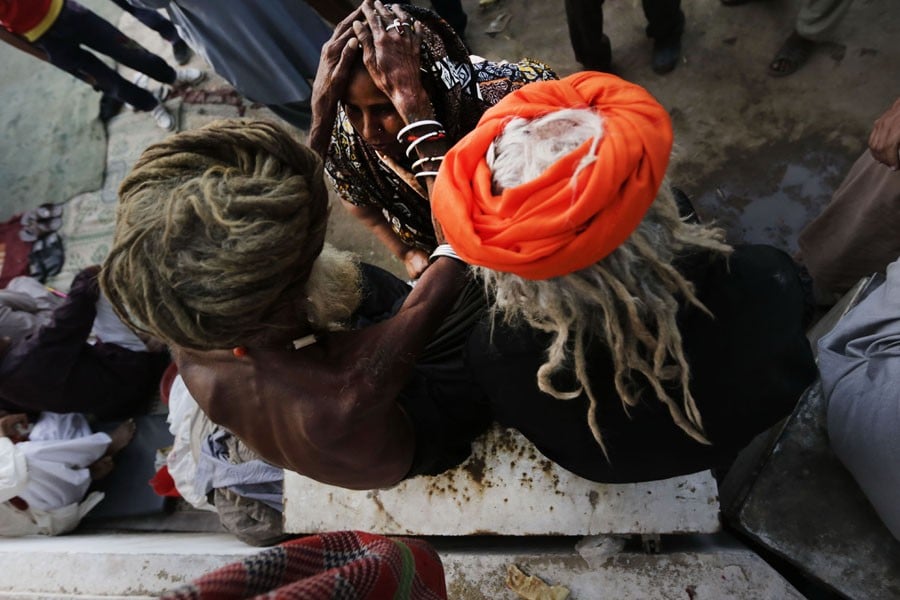
Shrines attract people who are riddled with problems in life. Consequently, they become easy prey to those disguised as aamils, pirs, and murshads

There are people who are adept at exploiting religion to get monetary benefits. You could classify them as ‘aamils’, ‘pirs,’ and ‘murshads’ -- found in abundance in and around Lahore.
The shrine of Hazrat Ali Bin Usman Al-Hajveri, commonly known as Data Sahib, attracts such ‘exploiters’ in hordes. The shrine gets visitors round the clock but their numbers swell particularly on Thursday nights and so do the activities of men posing as all-knowing ‘spiritual healers’ and claiming to have some magic potion that can change all that is bad in the people’s lives.
Every Thursday night, one can see a number of these pirs in colourful attire, drawing crowds towards them in the shrine premises. There are groups of unkempt malangs whose ‘other-worldly’ appearance takes in the simple visitor who now gathers around them as they start talking about their personal sufferings. This does the trick, and the simpleton is ready to offer anything to the malang in order to have his problem solved.
Some of these pirs can also read faces and exercise hypnotic control over the people with the way they stare at them. As a result, the subject becomes so overwhelmed that he/she wishes to become their mureed (pupil). (Traditionally, a mureed is ready to sacrifice anything to please his pir, money being just one of the things.)
People are known to offer their belongings like land, buffaloes, cows, costly clothes, and even daughters if it can please their pir and win his favour.
"A lot of young people who visit the shrine for prayers are lovelorn," says a policeman in plainclothes, who is deputed at the shrine. "On the other hand, most of the old people spotted here are ailing. A pir can expertly identify what is going on in the other person’s mind. When they utter words reflecting the inner feelings of that person, the latter is simply startled and ready to surrender himself [to the pir].
"We know everything but we aren’t allowed to disturb these gatherings," adds the policeman.
"Keeping in view the physical condition of the subject, it is often not difficult to identify his/her problem but the people generally don’t understand this point and are fooled," says a pilgrim at the shrine.
There are thousands of pigeons -- of white and grey hues -- hovering over the shrine. The pilgrims bring them feed (bajra) in packets. These packets are taken by the shrine watchmen on the pledge that the feed would be put before the pigeons. But most of these packets return to the many bajra shops around the shrine.
There are a dozen stalls outside the shrine that keep the shoes that people take off before entering the shrine. For a pair of shoes, you have to pay Rs2. That’s the official rate. But I have personally seen the stall owners charging up to Rs100 from people coming in from far-flung areas.
The same is the case with the parking stand where thousands of bikes have a brief stay round the clock. They are also overcharging, and there is no authority to check all these ills.
At the shrine premises, langar (free food and sweets) is distributed among the faithfuls, usually arranged by the affluent individuals and/or groups. I am surprised to know that this langar is sometimes distributed keeping in view the physical condition of those taking it -- small packets for the poor and bigger ones for the rich.
Most of the pickpockets in Lahore are also found at and around Data Darbar because the entire area is densely populated. Here you come across well-dressed people who start talking to you and ultimately beg for money. Some of these people also know how to hypnotise. They get money from many visitors to the shrine.
The same is the case with people selling langar (daal roti) outside the shrine. The well-heeled people go to these shops and pay for the langar. There are long queues at the langar and all seem to give the same daal roti as if this is the only food people should get for free. The destitute and hungry don’t have a choice but to come here for food later again.